The Panzer III tank replica 211
This German Panzer III tank Replica 211 is in private ownership and is often seen at military vehicle events in the summer in Britain like the annual "War and Peace" Show in Folkestone. The upper hull was built on top of a British cold war era FV432 armoured personnel carrier chassis.
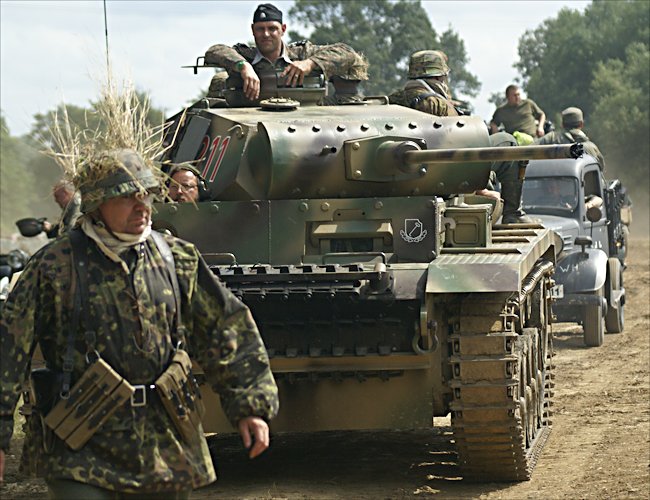
German Panzer III tank Replica 211
Panzer III tank shells bounce off Allied tanks in 1940
After the Spanish Civil War lessons were learnt. The German General Staff recognised the problems caused by only having a two man crew. There were just too many tasks to do to fight a tank properly. Comfort and convenience of crews should be taken into account as a tank design criteria. They insisted that the Panzerkampfwagen Mark III should have a five man crew. This would make sure that the men were not over worked or obliged to hurry their functional task. It would reduce the amount of mistakes made that could result in their deaths and the loss of a tank.
The thinking was that the Panzer III and IV would be deployed as a team. The main battle tank would be the Panzer III, equipped with a 37mm armour-piercing gun and two machine-guns. In 1939 that was a big improvement on the Panzer mark II light tank. The Panzer IV was designed to supplement and support the smaller tanks with its bigger 75mm cannon firing high explosive HE shells.
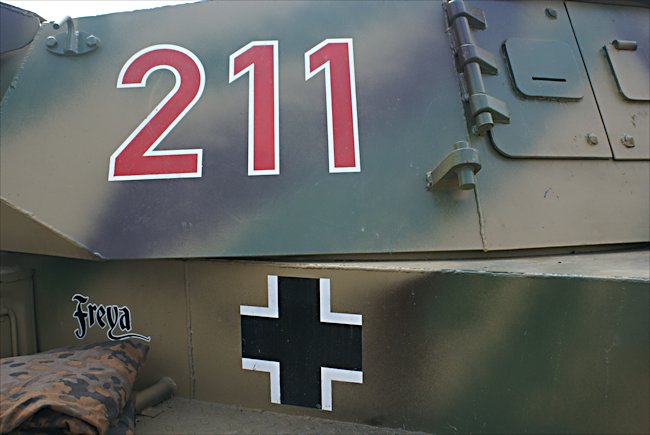
German Panzer III tank Replica 211
Compared with the mid-1930s opposition’s tank designs like the Renault FT, the German tank designs were luxurious. In 1936 the British introduced a new three man tank the Vickers mark VI light tank. The crews complained about the design. "The gunner/radio operator was useless when we went to where ever, because he could not operate radios, load the gun and fire at the same time. So you can see the difficulty."
The German tank crew members sat next to each other. They did not fell as isolated as the French tank crew who sat on their own. The hull machine-gunner and driver sat in the front together. Behind them was the gunner and loader. Above them was the tank commander only a head and shoulder higher.
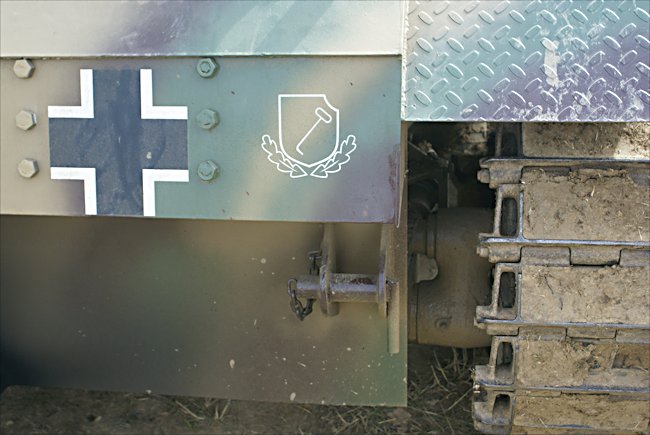
German Panzer III tank Replica 211
In the heat of battle they could easily communicate with each other and offer reassurance. It made team work easier. The crew worked more efficiently. Even if the noise of battle was too loud they could make signals and lip-read to get their point over.
The new tanks used the improved electro-welded armour plating rather than bolted armour. Armour thickness was varied to save weight but they did under estimate the amount of amour protection the panzer III and IV needed at the front to face British and French tanks during the Battle of France in 1940. This mistake was dealt with by upgrading the frontal armour of tanks sent to Rommel’s Afrika Korps in North Africa in 1941.
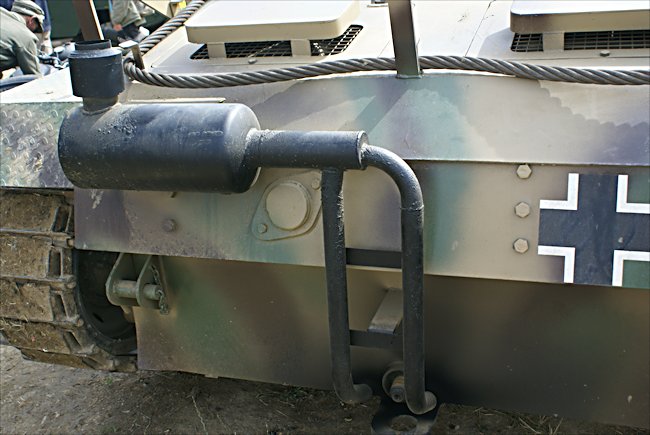
German Panzer III tank Replica 211
The same went problem was encountered with the penetrating power of the Panzer III and IV guns in 1940. The could not knock out the British Matilda and the French Char B1-bis tanks. Long barrelled high velocity cannons were added as an upgrade for their desert deployment in 1941 and for the invasion of Russia.
The German tank crews in France were horrified when the shells from their 37mm guns just bounced off the British and French tanks heavy armour. The Panzer crews called their guns Tommy-knockers or door-knockers because that was all they did on the enemy’s armour plating, make a knocking noise. Later in the war this situation would be reversed with Allied tanks 75mm guns being unable to penetrate German slopped frontal armour.
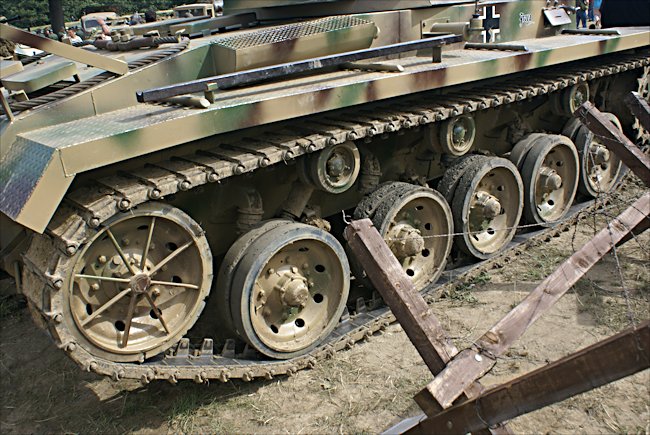
Notice the wrong wheels on this German Panzer III tank Replica 211. There should be six small wheels on the surface track not five medium sized wheels.
The Panzer III became obsolete in 1943 right after the battle at Kursk. It was outclassed by most of the Russian tanks it went against. It was replaced by the Panther Tank. The Germans took the turrets off surviving Panzer III tanks and converted them into artillery spotting vehicles, ammunition haulers, command vehicles and training vehicles.
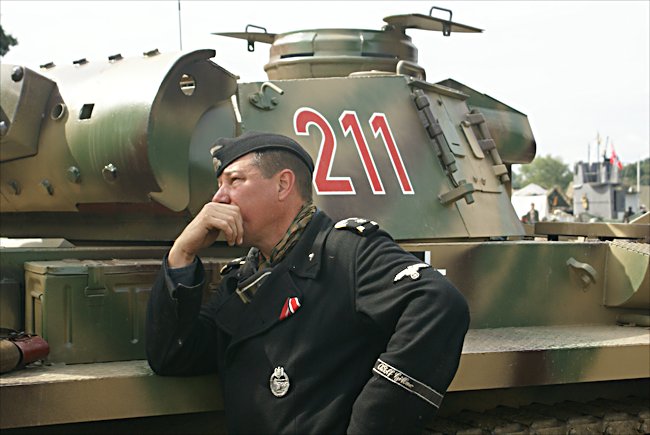
German Panzer III tank Replica 211
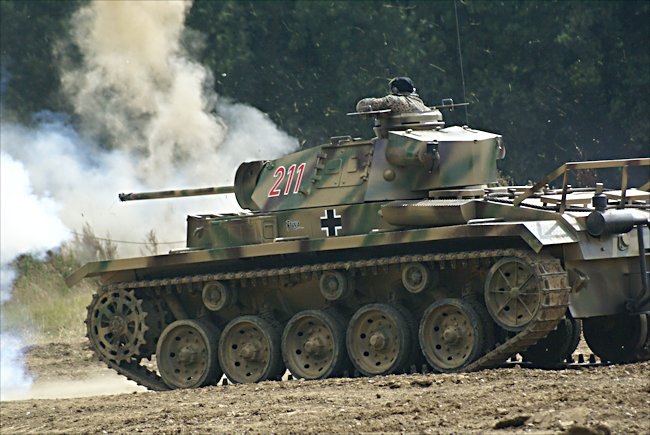
German Panzer III tank Replica 211
WW2 tank books

